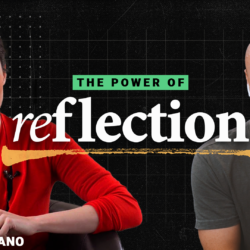My friend is bad with chopsticks.
He’s so bad that he actively avoids places that use chopsticks.
On the rare occasion when we convince him to come out for sushi, he’ll try to use them for a second, get embarrassed, then ask for a fork.
In the scheme of things is this a huge problem? No. But it’s definitely an inconvenience, makes him feel weird, gets him strange looks from waiters, and sometimes keeps him home.
What to do?
Obviously he needs more practice, but it’s tough when the reps are messy, they’re taking place in the open, everyone is watching, and you don’t want to drop a piece of hamachi on your shirt.
Practicing onstage is rough.
But what if he asks for his customary fork and pockets the chopsticks? He could go home, watch a YouTube tutorial, and eat every meal for the next couple of days with chopsticks.
He could practice a bit backstage and by the end of the week have chopsticks figured out.
He’s a free pair of chopsticks, 3 minutes on YouTube, and a few days away from never asking for a fork again.
Replace chopsticks with any skill and we can steal from this approach.
We all have more learning to do. Sometimes we don’t start because the process can get ugly. There’s no way around that.
But we don’t always have to move through the ugly onstage.
Let’s pocket the chopsticks and find some backstage time to watch a couple videos, read a little, struggle a bit, and get the hang of something.
Depending on the skill, we can learn enough to be dangerous in a day, a weekend, or a week of backstage time.
Warning: We can’t get stuck backstage forever. Once we get the hang of it, we need to integrate it into real life. We need to deliver the new lesson to students, try the new move in a game, give our sales pitch to a client, or use chopsticks at the restaurant.Once we integrate it, we’ll get a little better each time we use it.
This is especially important for leaders. When we model the learning process it builds a safer environment for the people around us to do the same.
Action Plan:
1. Identify a skill
2. Practice backstage to figure out how to do it
3. Integrate
4. Repeat with another skill
There are hundreds of new skills at our fingertips. With a little backstage time we can start adding them to our arsenal.
For more on improving the quality of practice: Three Tools for Better Practice
by Trevor Ragan









